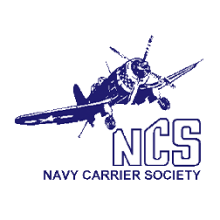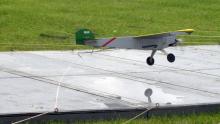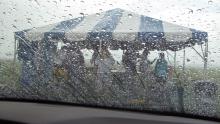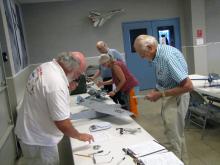
For detailed information see the IAC Calendar.
There are three official Carrier events flown across the US: Class I, Class II, and Profile. There are also several unofficial events including Sportsman Profile, .15, Sig Skyray .35, and Nostalgia. Most of the events are scored and flown the same way. There is a wide diversity of scores earned. High speeds can range from approximately 70 mph all the way up to 120 mph. Low speeds can average as slow as 4 to 8 mph. Many times, it is difficult to judge whether or not the model is stopped. Carrier designs tend to be slightly more complex than other CL models. A typical airplane will have up- and down-elevator, throttle, and a tailhook. Other controls can be added, such as flaps, ailerons, and rudder. With the exception of the elevator and throttle, the other controls are usually deployed only once, after the high-speed flight. They remain locked into position.



















